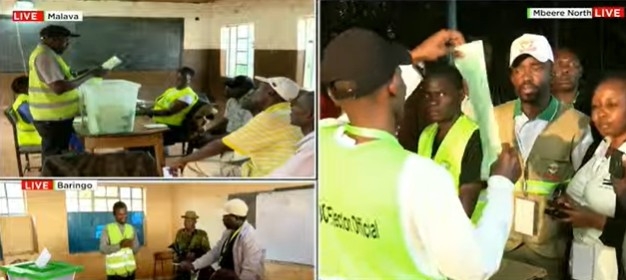Counties in Ukambani, the entire Coast and northeastern regions are on alert for heavy rains that are likely to cause flooding, between now and January.
A new report shows the entire region is sure to receive enhanced rainfall, especially this month.
The forecasters said they are 80 per cent confident of these rains so people who need to plant should do so.
Temperatures will remain unusually high across Kenya.
“There is likelihood of floods in the eastern Kenya and coastal areas which could lead to displacement and inundation of farmlands,” says the November-January weather forecast produced by the Nairobi-based Igad Climate Prediction and Applications Centre (ICPAC).
It shows people in the entire Western half of Kenya will have normal rains, which will be enhanced in only a few places.
The ICPAC report usually covers Kenya, Uganda, Tanzania, Somalia, South Sudan, Ethiopia, Sudan, Burundi and Rwanda.
“As a result of the observed above average rainfall experienced across much of the Greater Horn of Africa during March to May 2023 (MAM 2023), elevated rainfall during October to December 2023 (OND 2023), as favoured by the forecast, may potentially contribute to flooding in areas prone to floods,” the new report says.
The centre admitted such a seasonal forecast comes with a lot of uncertainties. “Therefore, this seasonal forecast should be used in conjunction with weekly and monthly forecasts,” it said.
Nevertheless, it advised Kenyans to prepare for heavier than-normal rains.
“Adequate precipitation in the Eastern Kenya region is conducive for grains. Expected good harvest for cassava, rice, pulses, millet, sorghums and maize in the lower eastern,” it said.
It said the likelihood of outbreak of pests and floods in the Eastern Kenya and coastal areas which could lead to displacement and inundation of farmlands.
“Possible damage of infrastructure such as bridges, roads and irrigation equipment. Wetter than usual conditions might interfere with harvesting of crops which might lead to grain spoilage in the North Rift region,” the forecast said.
Last week, experts warned of a possible outbreak of livestock disease that might be triggered by the anticipated El Niño rains.
They warned Kenyans against getting into contact with sick animals to avoid spread of the Rift Valley Fever (RVF) disease.
Veterinary Services deputy director Jane Njuguna however assured the public that the government is well-prepared for any eventualities associated with the El Niño rains.
"So far, there is a stock of about two million doses of RVF vaccines at the Strategic Reserve at the Kenya Veterinary Vaccines Production Institute," she said.
Njuguna was speaking during the media training on reporting RVF. The meeting held in Naivasha was organised by the Food and Agriculture Organisation of the United Nations.
He said some counties including Isiolo, have started early vaccination on RVF incase of disease outbreaks.
"We are also doing outreaches and creating awareness to the public in addition to disease surveillance in the risky counties," she added.
"The government is prepared and there is no crisis," she said.
Dr Matthew Muturi, an epidemiologist at the Zoonotic Disease Unit said people should avoid consuming uninspected meat or meat that is not from a slaughterhouse, to avoid contracting zoonotic diseases.
Muturi said farmers should ensure animals are vaccinated against RVF.
Although most of the high risk areas of RVF are in Northeastern and upper Eastern areas, all areas that have excessive flooding and support high numbers of mosquitoes are at risk of RVF outbreaks.
The prone counties include Wajir, Garissa, Tana River, Marsabit, Isiolo, Baringo, Murang'a, Kilifi, Nyandarua and Samburu.
RVF is a vector-borne disease spread by mosquitoes.
Symptoms in livestock include mass abortion and death of young livestock.
In humans, the symptoms include flu-like illnesses, it can also affect the eyes, which is characterised by blindness and blurred vision.
It can also affect the brain which is characterised by hallucination and coma or can also result in bleeding.

















